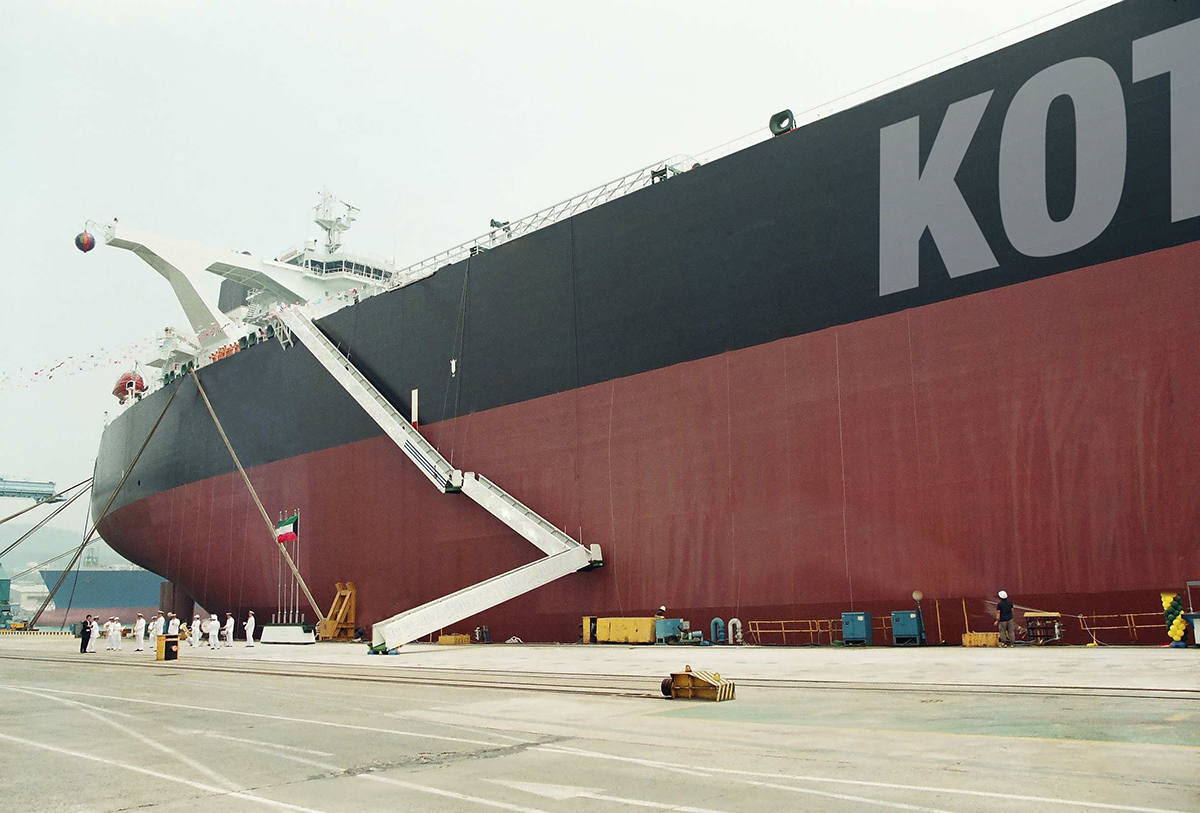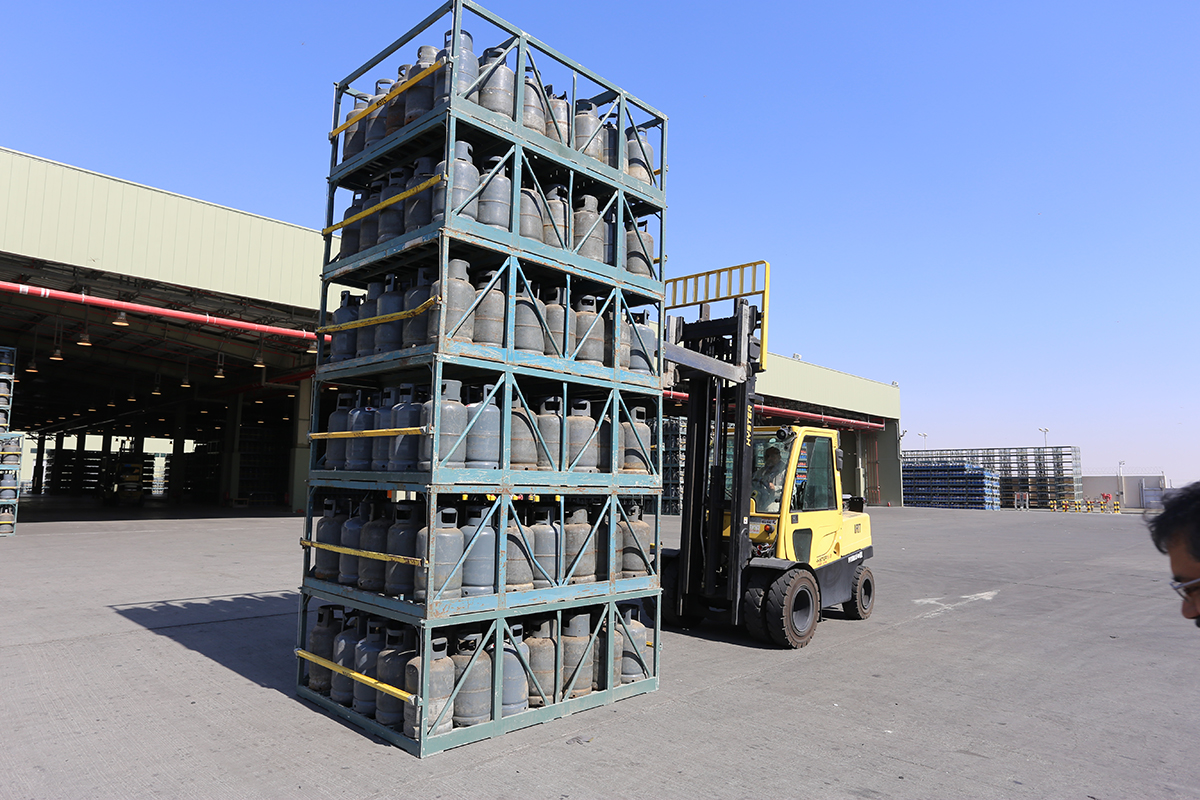HSE Current Projects
Financial Year 2024 - 2025 (April - December 2024)
KOTC Fleet Engineering Group
Achieved

1. Energy Efficiency Operational Indicator (EEOI):
Calculation of EEOI is only a recommendation by MEPC but KOTC has volunteered to implement this monitoring tool in full letter and spirit. All vessels are uploading data to a web based software “PrimeShip-Green-EEOI” of Class NK – Japan, to record actual energy consumptions and emissions. We have benchmarked our carbon footprint and now comparing these results with our targets in line with the SEEMP elements.
2. Installation of Portable / fixed emission monitoring equipment (SOx, Nox):
Fuels and exhaust gas emissions are subject to international and regional standards to control the environmental air pollution. Machinery design features have been enhanced by the makers to reduce NOx levels and Sulphur contents of the fuel are tightly controlled for Sox levels. KOTC has pro-actively volunteered to monitor the exhaust emissions of the entire fleet with a view of spot / continuous monitoring of harmful emissions. Following measures have been implemented:
KOTC have introduced portable equipment on all existing vessels. This enables our fleet to measure and record the actual emissions at any given time on regular basis.
Fixed instruments monitor and record the emissions on 24/7 basis. This is a standard equipment on all new vessels inducted since year 2012, meanwhile we are in the process of retrofitting this instrument on all existing vessels delivered after 2005.
3. Waste Management Plan:
Company has introduced a tight regime of waste reduction and waste management onboard all vessels, the identified measures are much more stringent than the statutory and international requirements. Our policy now is zero garbage discharge to sea. All hazardous and recyclable waste is landed ashore for safe disposal.
4. Vapour Emission Control (VOC):
In order to restrict the flow of cargo vapours from cargo tanks to the atmosphere, we have approved plans for all vessels to monitor and restrict emissions. Special attention is paid to the PV valves maintenance and operations. We also have introduced vapour discharge manifolds onboard many vessels to safely return the vapours to shore during loadings.
5. Ozone Depleting Substances (ODS) - Refrigerants and Halons :
All our new vessels are free from ozone depleting substances. A tight regime is enforced on existing ships to monitor the ODS for inadvertent escape to atmosphere, comprehensive logs are maintained.
6. Monitoring of Vibrations, Sound Levels and Air Quality Program :
All our vessels routinely carry out vibrations, sound levels and air quality checks as per our commitment for the health of the crew onboard our vessels.
7. Bio-fouling Management :
In order to contribute to the environment, KOTC has prepared a comprehensive Bio-Fouling Management Plan which specifies the strategy for avoiding transfer of water borne organisms and pathogens from one part of the world to another.
On Going
1. Ship Energy Efficiency Management Plan (SEEMP):
Requirements of MARPOL Annex VI (MEPC Resolution) were implemented on the entire KOTC fleet well ahead of time. All vessels have a ship specific plan for energy efficiency improvement. The SEEMP document and company objectives encourages staff to reduce fuel consumption and carbon emissions which influence the global environment. We are in the process of identifying new objectives for energy saving, this is being done in consultation with the experts in the industry.
2. Energy Efficiency Design Index (EEDI):
It is an IMO mandatory requirement for new vessels to have a design index for all onboard machinery and equipment for energy conservation. Accordingly, all our new vessels will comply with EEDI requirements.
3. Environmental Ship Index (ESI):
ESI is a voluntary system designed to improve the environmental performance of sea going vessels calling EU ports. It is an instrument to visualize the environmental performance of ships regarding air pollutants and CO2. The ESI score identifies seagoing ships that perform better in reducing air emissions more than the current emission standards of the International Maritime Organization. Currently ten (15) of our vessels, which are usually calling European ports, are registered with this program and getting regular ratings from the World Port Climate Initiative authorities.
4. Hull Integrity Management Plan (HIMP):
A comprehensive database of hull structures, defects, inspections, coating condition and repairs has been compiled for 17 existing vessels. The system comprises of separate hardware onboard vessels and in the head office, which is directly linked to the server of the service provider, ABS. We are in the process of implementing similar software on the nine new vessels. This will ensure optimum hull integrity of the Cargo and Ballast tanks.
5. Fuel in Emission Control Area (ECA) and European Union (EU) ports:
Presently all our vessels are using 0.1% sulphur fuels in ECA zone and in EU ports. This is in full compliance with the existing MARPOL requirements and EU directives. Some Chinese ports have also reduced the limits of Sulphur in fuel to 0.5%. For this forthcoming significant change, a comprehensive in-house study carried out for its impact, implications, change in procedures and adaptation for smooth shifting.
6. Energy Management:
We are embarking on a very ambitious plan of energy management. This will enable us to benchmark our energy consumptions, monitor and implement innovative procedures to reduce our energy requirements.
LPG Filling Branch (Um-Al-Aish)
Achieved
 1. Firefighting Monitors:
1. Firefighting Monitors:
Fire monitor has been designed to augment other firefighting system installed in the LPG Filling Plant. Its calculation shall be based on the worst fire case scenario and the capability to deliver the maximum volume of water and pressure as per the design rate for a specific number of hours.
2. Flare stack:
A flare stack collects and discharges gas from atmospheric or pressurized process components to the atmosphere to safe locations for final release during normal operations and abnormal conditions (emergency relief) and to facilitate the safe flaring to the atmosphere of waste gas brought about by venting, purging and maintenance works in the LPG Filling Plant. the gas exiting the system is dispersed in the atmosphere. Flare systems generally have a pilot or ignition device that ignites the gas exiting the system because the discharge may be either continuous or intermittent.
3. Oil Separator:
A practical and viable solution to address environmental contamination issues related to the discharges of oily wastewater from LPG Filling Plant operations by separation and extraction of oil and oil sediments from water.
4. Trucks wash recycling system:
The system is designed to recycle and aerate the wash water automatically, without changing filters or manual supervision. The system uses no chemicals or additives and is totally environmentally sound.
On Going
1. Sewage treatment plant (STP):
Practical and viable solutions to address many environmental issues related to waste water treatment and recycling.now practice in Kuwait to subject the wastewater treatment to tertiary level so that the treated sewage effluent (reclaimed water) can be used for irrigation of landscape or Furthermore, the water channels surrounding the Site area are considered to be environmentally sensitive and strictly no amount of sewage either treated or untreated shall be discharged to these water channels under any circumstances.